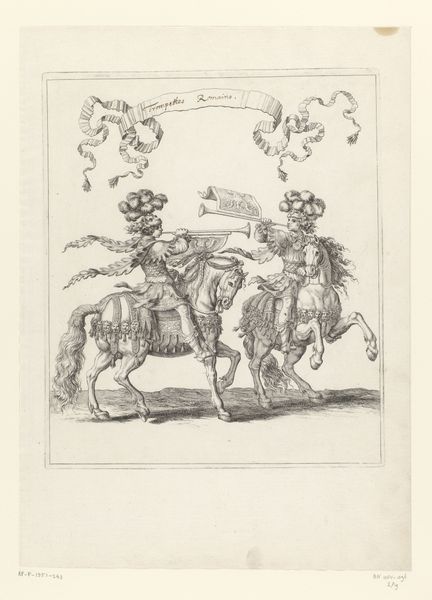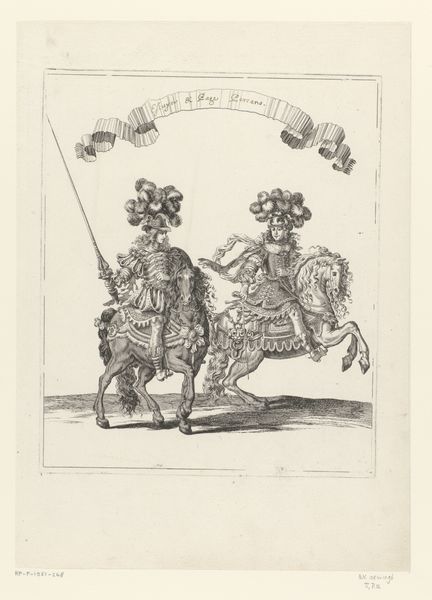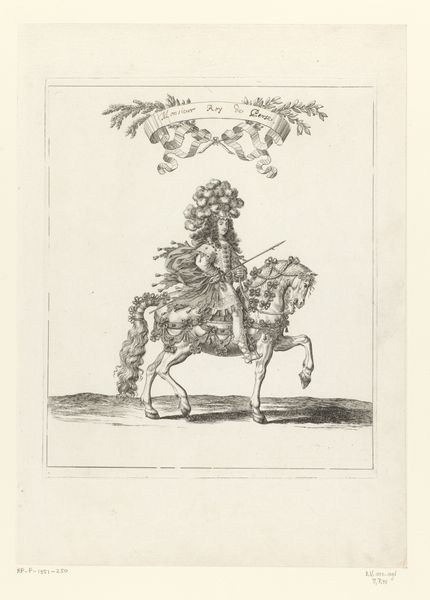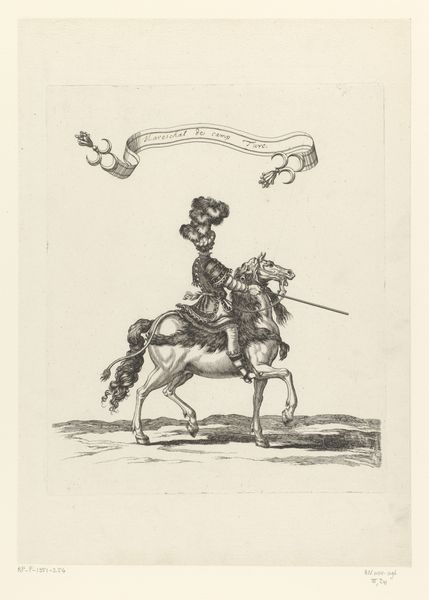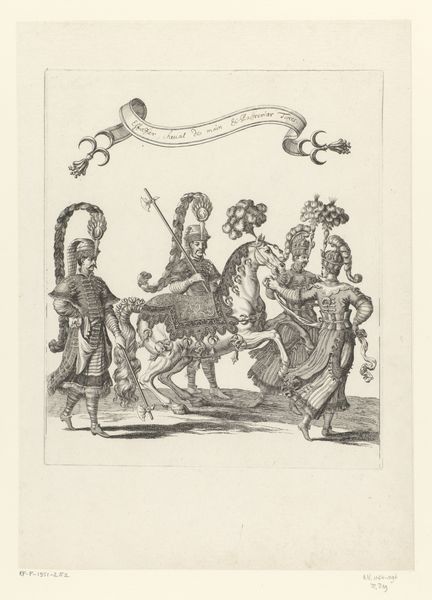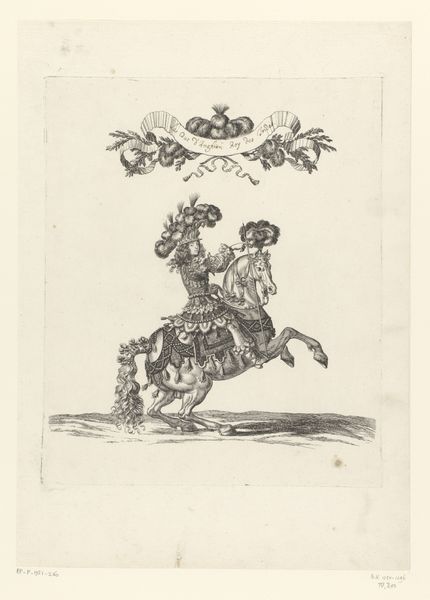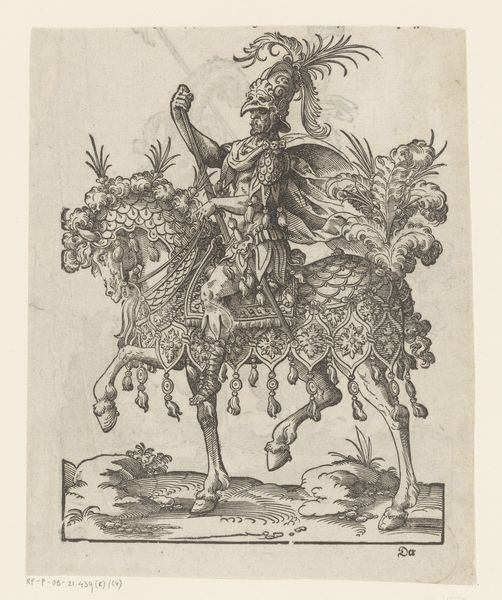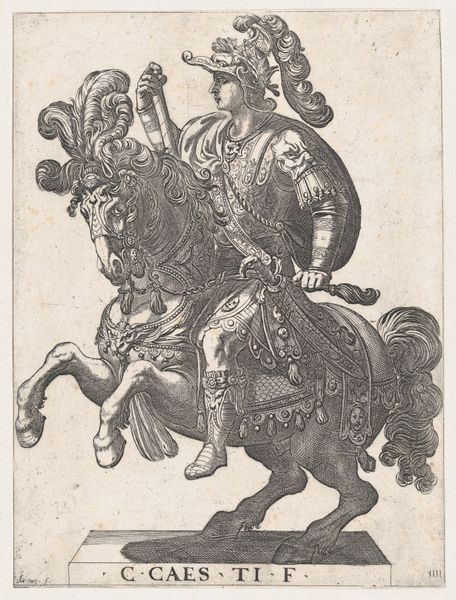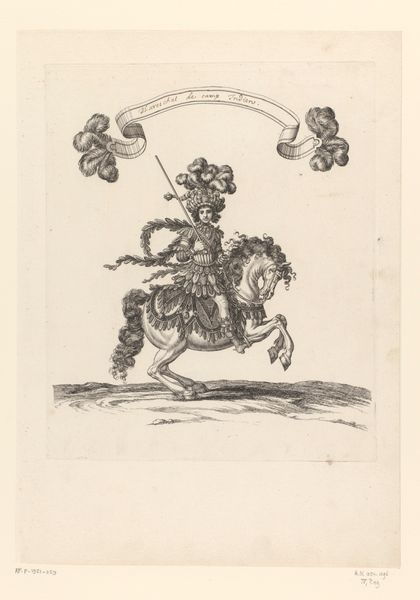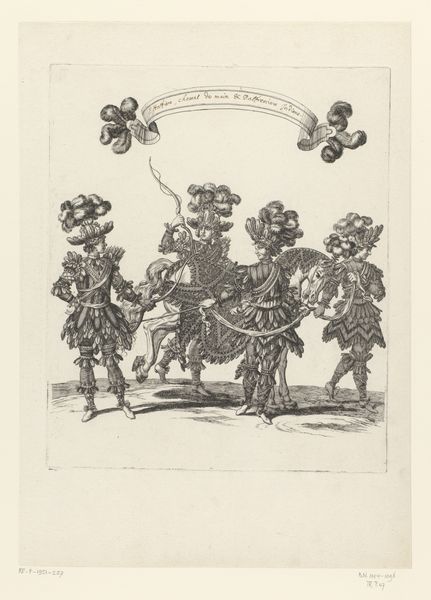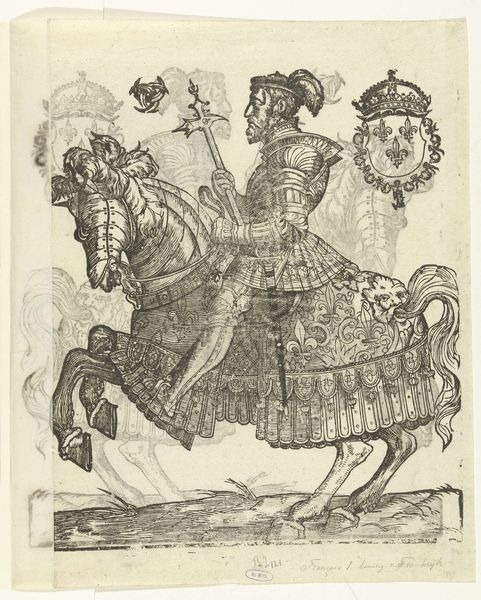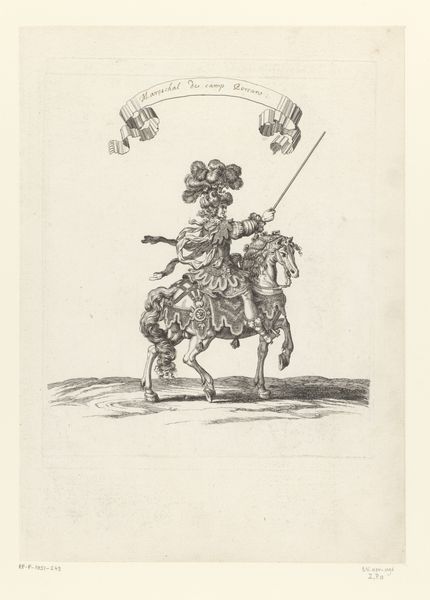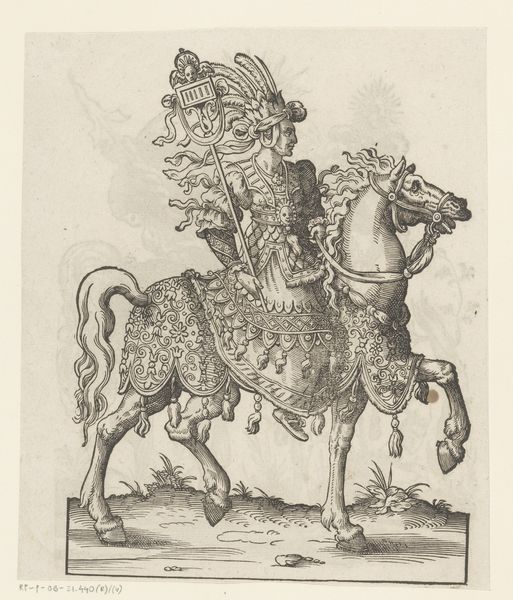
print, engraving
#
portrait
#
baroque
# print
#
old engraving style
#
pen-ink sketch
#
horse
#
engraving
Dimensions: height 314 mm, width 262 mm
Copyright: Rijks Museum: Open Domain
Editor: This is an engraving from 1670 by François Chauveau, titled "Lodewijk II de Bourbon-Condé te paard in Turks kostuum," which translates to Louis II de Bourbon, Prince of Condé, on horseback in Turkish costume. It has such a unique texture. What statements do you think this work might be making about identity or power? Curator: The portrait is dripping with colonial undertones. It's fascinating, really, how Chauveau visually constructs Condé, not just as powerful, but specifically through the lens of orientalism. How do you read the "Turkish costume" in relation to Condé's position in French society at that moment? Editor: I see how it makes Condé seem exotic and powerful. Was there a political agenda behind commissioning art with this kind of symbolism at that time? Curator: Absolutely. The Baroque era was marked by image manipulation to affirm royal power, but here we have something more specific: an engagement with the ‘other.’ The exoticizing gaze flattens Turkish culture into mere spectacle, doesn’t it? It becomes a costume to be worn, rather than a culture to be respected. How does that contrast with other portraits of the period? Editor: Most of the portraits I've studied from this period show their subjects in their normal aristocratic attire. This is a completely different representation of the sitter. Curator: Precisely! And that difference is key. The performance of identity here hinges on a power dynamic, one where Condé can appropriate and display "Turkish" elements, thereby enhancing his own status. Doesn't it make you wonder what the French court knew, or even cared to know, about the actual Turkish people? Editor: It certainly shifts my understanding of portraiture during that period. I never thought about that aspect. Curator: Indeed. It reminds us that even seemingly straightforward portraiture can be deeply implicated in larger political and cultural narratives of power and dominance. These representations are rarely neutral.
Comments
No comments
Be the first to comment and join the conversation on the ultimate creative platform.
